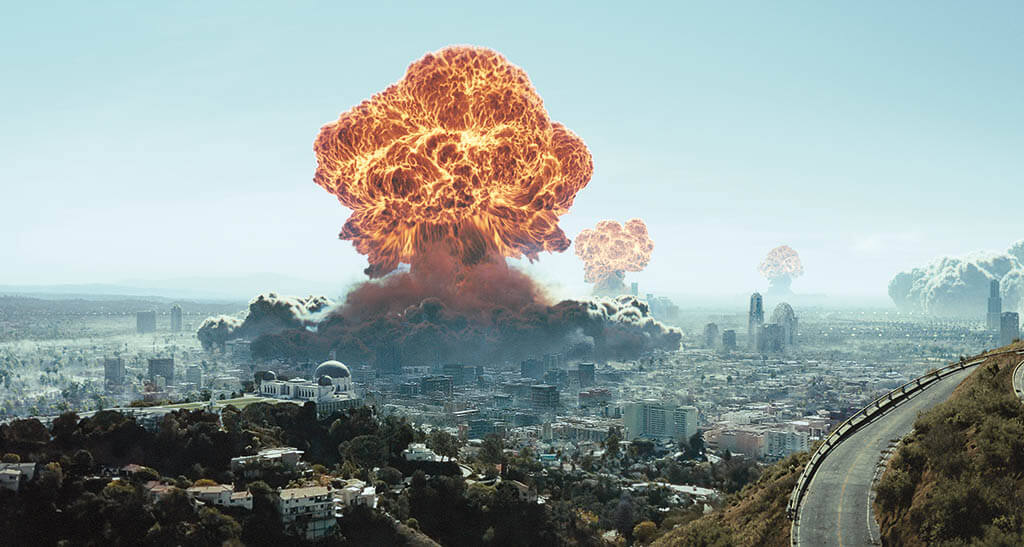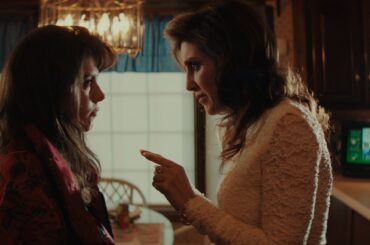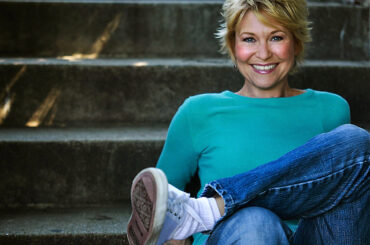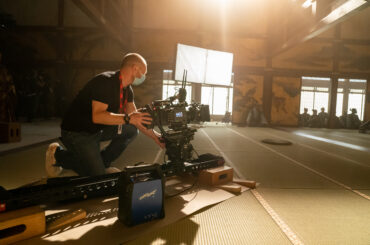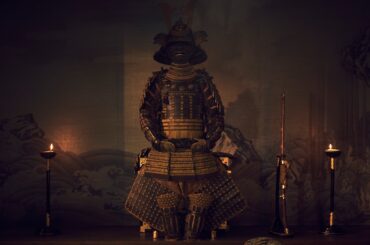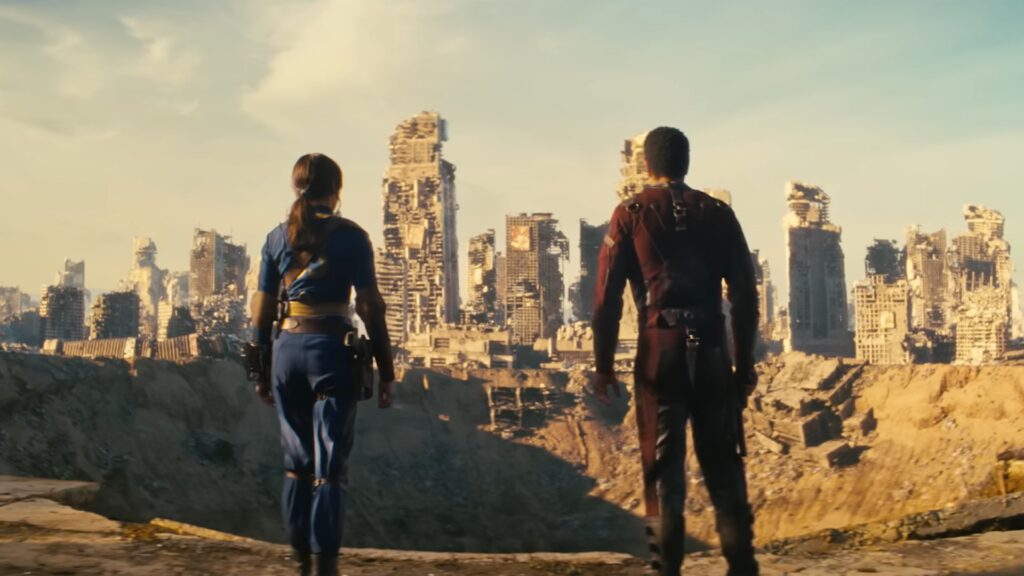
Fallout is a poppy, sometimes even peppy slice of post-apocalyptic mayhem. Based on the video game franchise, creators Geneva Robertson-Dworet and Graham Wagner create a world full of glorious, oddball ideas. Fallout VFX Supervisor Jay Worth helped these striking visions come to life for the hit series produced by his longtime collaborators, Jonathan Nolan and Lisa Joy.
There’s a liveliness to the decay in Fallout achieved with the potent balance of digital and practical effects. Plus, the grand locations certainly helped matters. “We had these incredible scope-y locations, Namibia, Utah, New York, and it all needs to feel like post-apocalyptic Los Angeles,” Worth told Immersive, “and the fact that it feels like we were able to achieve creating this fully fleshed out multi-locational world, it was really fulfilling.”
The Fallout VFX supervisor recently broke down to us creating a cyclops, the gulper, Snip Snip, and other impressive sights.
[Note: This interview has been edited for clarity and length]
With the game franchise’s fanbase, there’s already a visual shorthand. How’d you want to stay true to but expand on that aesthetic from the games?
I’ve just been able to work with Jonathan for 14 years now, which has been awesome in doing all of the projects, so there’s a bit of a shorthand there as well. But it really just comes down to story and leaning into what VFX does well and what production does well, and then getting to work with Graham and Geneva was just such a pleasure.
I think we were set up for success, which is that we weren’t trying to do shot for shot. We weren’t trying to emulate a certain thing. Working with [production designer] Howard Cummings, the story they had, and the actors we had, we already were ahead of the game in terms of this feeling of, yes, this is the world and we got to add to it.
We always talk about VFX at its best should be a sprinkle on top, not the cake. This one definitely feels like there’s more sprinkles, but it still feels like the story, the characters, the locations, the sets, all of these things already had that tactile lived-in feel, which is what Fallout‘s about. It has a quality to it that has that lived-in vibe. There’s a sheen on it at the beginning, but that sheen gets taken off quick and you still need to feel the sheen underneath it.
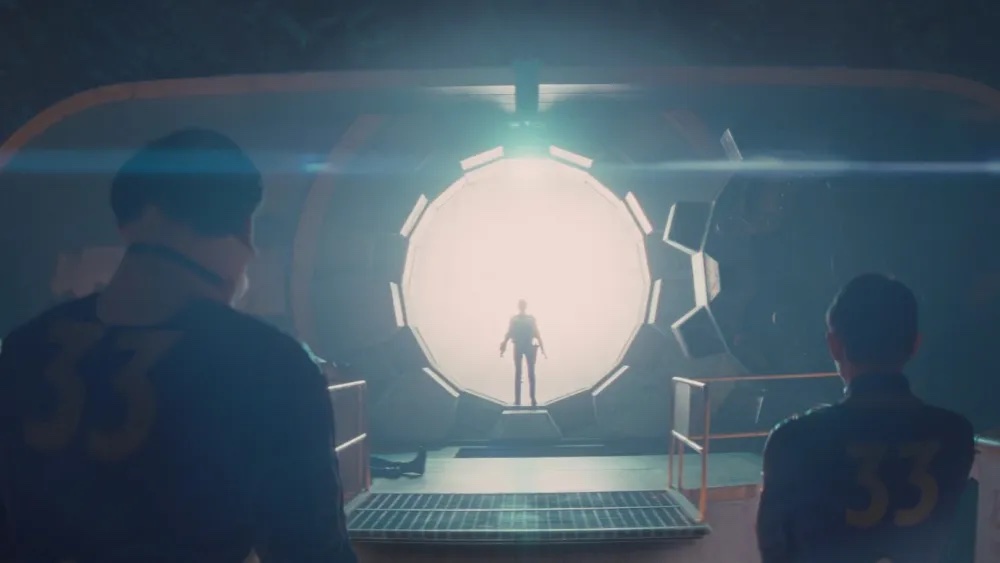
Let’s talk about those sprinkles in the vaults. What were some subtle digital effects there?
So that’s probably the one of the favorite magic tricks we did this season, honestly, was the vault. We used LED volume stage, but you can’t quite tell how we used it. So this is one of the fun ones because we had two sets. We had a massive vault set where all the balconies are, the hallways, the classrooms, and all of the tunnels and everything else.
Then you get into the farm [in vault 33]. We built on the stage only to the first row of corn, and the whole barn area that was blue screen, but then the wedding ceremony that was done on a volume stage. The beautiful thing about it was it’s supposed to have a projected quality to it, so it should feel slightly false, but it needs to feel like a solid real object.
We have real corn in the wedding area, and then we have projected corn that’s supposed to feel like real corn up to a certain point, and then it’s supposed to feel like a projected Nebraska countryside beyond that. And so, we worked with the team from Magnopus, and they’ve been amazing to work with. We did a bunch of Westworld stuff with them for all of our volume work there, and we created these elements that you just can’t quite tell where the reality starts and where it ends.
Most of the stuff goes down when you’re in the wedding, it’s all captured in-camera. We didn’t really touch much from the volume work. And then when the film burn happens, that’s all projected. That’s all on the LED volume stage. We did some cleanup, but the guts of the element was all there practically.
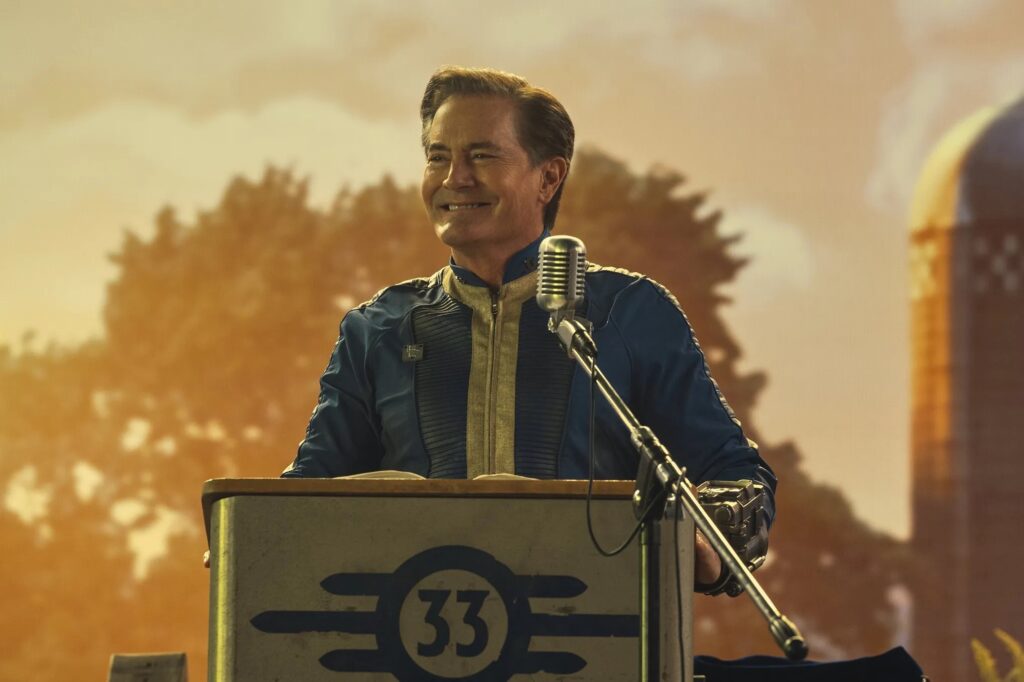
How do you think the volume has evolved over the years?
The black levels have gotten better. I think it’s not necessarily the screens, it’s the technology. The update for Unreal was a big deal in terms of the lighting and how that was all going to work. But once we get past a certain level of it, the thing that we love in our world is we don’t want to live on a volume stage. We want to go to these amazing places like Namibia, Utah, and whatnot. And so, we only use it for very specific instances, which opens it up and lets the technology shine a little bit better.
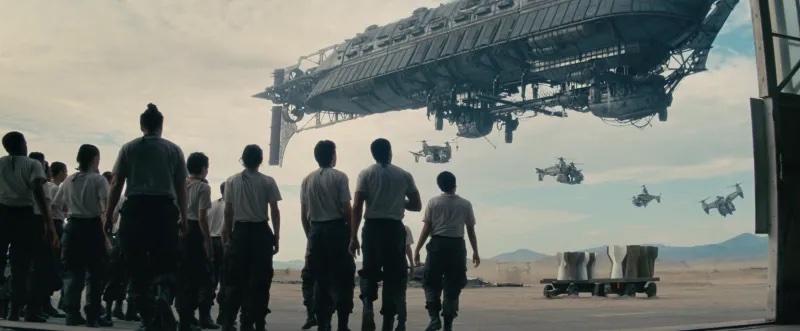
The CG aircrafts looks fantastic in the show, especially during daytime. How did you get them just right in Fallout?
For us, when I find a hard surface company that I like, I never let them go. RISE [visual effects studio] in Germany, they’ve been a great partner for a few years now. A little anecdotal story is they showed off one time when I was getting them to bid on Westworld. The effect was for this cool drone thing that Maeve lands in, and we had some basic designs, but it was kind of figuring it out as we went. I sent them the bid on Friday, and on Monday, they sent me the bid back and an example previs of the shot… It probably could have aired. It was like, oh wow, you’re really, really good at this.
But then the other bigger one for us is all of the before and afters we shot with real helicopters present. For the liftoff of the brotherhood aircrafts, we had a drone filming a helicopter lifting off. So all of the physics of what that liftoff is, that is not made up. It’s the rotation, it’s the shifting, it’s the distance, it’s the way it pitches forward.
All of that was captured in-camera with a vehicle that acts accurately because the vertibird is a helicopter, do you know what I mean? The temptation is to make those go super fast because that’s what you feel like it should be. If you look at it, it’s just kind of cruising along and it has a realism to it.
Did Howard built a vertibird to shoot as well?
We literally have a shot with this huge vertibird that Howard built, and that’s the other reason it works is that we had a physical object that we built and then scanned. We didn’t make it up, all the lighting and everything. We had it there on the day for all of our shots, so we know exactly what it’s going to look like in the lighting environment. The vertibird, we had it on a gimbal rig.
We actually put the drone into the volume stage to film. That’s the other challenge is shooting LED technology with a film camera. Thankfully, the team of Magnopus embraces this, but most people are like, “How do you even do that?” Because the whole thing is based on digital, and you can’t have to put your sensors on this camera, and you don’t get to see it.
So how do you do that?
You have to do all this testing to make sure all of your lighting setups are all correct and all of your levels are correct. Thankfully, the team killed it. All of the projects we’ve done have all been on film, so we have a shorthand there as well, but it’s a challenging technology marriage.
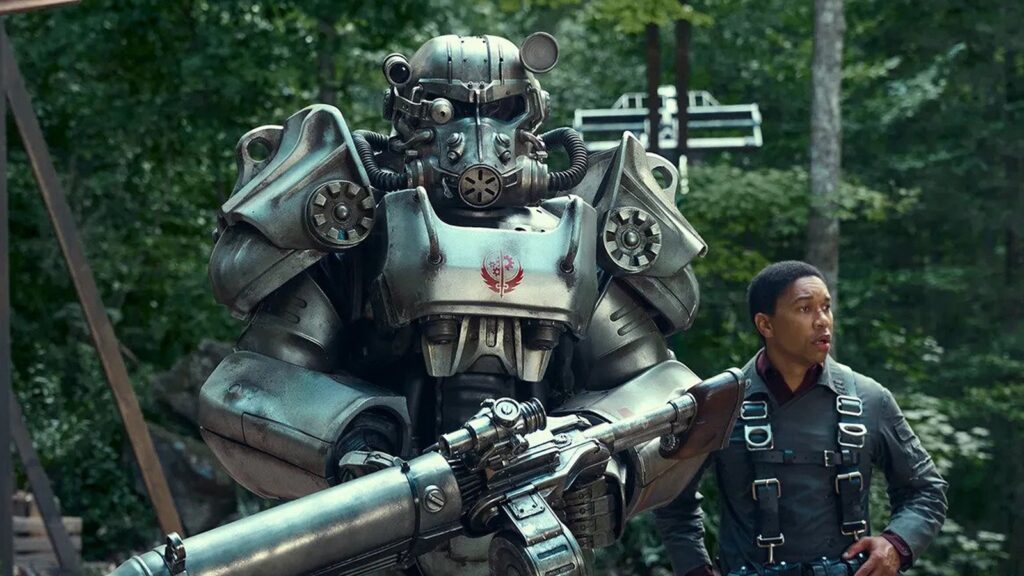
What’s fun about the world is that these advanced pieces of tech can have some really cruddy qualities about them. What were some flaws in the world of Fallout that you wanted to emphasize?
For me, the imperfections came once again with starting with the reality of what we shot. Howard Cummings and his team are so incredible at building this detailed world. I was looking at some of the fan nerd-out things online, and they zoomed in on one of the vault hallways. They’re like, “They even got the weird hexagon nuts to match!” I’m like, wow, that was a level of detail I didn’t know we went to.
[On-set supervisor] Grant Everett and my onset team, they capture all these detailed texture photos and we just take them and carry them over. Same thing with all the creatures, all that stuff. It adds to that level of, like you said, there’s a groundedness in the imperfections that make a show like this.
To be honest, I think the show would’ve had a falseness to it if it was shot digitally. It would’ve had a sheen to it that we would’ve been fighting against. Fallout has a grittiness to it that really benefited from film in a huge way.
Let’s talk about creatures. Whether it’s the yao guia, giant roaches, or the sea creature, did it involve a lot of studying animals?
Totally. The yao guia, it’s kind of based on a bear, but not really. The gulper is still the craziest creature I’ve ever had to do. To create a human-amphibian hybrid that needs to pay off as being part-human while also being this crazy creature… we pulled all these weird references from lampreys to toads and iguanas.
I went with the skin of a toad, but I wanted the inside mouth done first. The inside mouth was just going to be like a cat’s tongue. And then Jonah, Graham, and Geneva had this horrifying idea, what if we made inside of the mouth human fingers? I’m like, oh, good lord. It was amazing. That was actually added after the fact. First, it was going to be just these nubs.
Was a puppet involved?
We planned all of our creatures early enough where we had puppets built, so that we had something physically there on the day. We knew how water reacted, how the light reacted, the tone of it and the color of it matched the skin tone that we knew we wanted to go with.
Actually, we even used one of the puppet shots and just changed the eyeball right before Thaddeus gets pulled out [of its mouth]. We were going to do a full CG shot, and Jonah was like, “I love the puppet.” We left that in shot in there of the puppet, which sucked people in and everything else.
Same deal with the yao guia?
And same thing with the yao guia. I mean, granted, it was huge, we knew the size, we knew the shape, and we had a big dude with a big head and all those classic things, but it really helped for camera and for everybody, even for tracking to have a real object there and know how that all worked.
How’d you pull of Snip Snip [voiced by Matt Berry]?
We built a one-to-one model of Snip Snip, and we put it on this jib arm. It had all this natural float to it, and it actually made the VFX a lot harder. Now you have a physical object that you’re shooting over, and you’re shooting and using in coverage as a real object, and you’re not going to make it a visual effect. Now, we cut back and we have a full CG version, and it has to match one-to-one.
It’s very different than replacing it in every shot and being like, “Okay, well, we have a reference there, but we’re just going to replace it anyway.” No, no, no. That’s not how we work. We shoot our real object, and we want to keep our real object. We like how it floats, how it looks, and how the lighting works. You don’t get to touch that shot.
Now, we have to add these bespoke eyes that bring humanity to him and all these limbs and the thruster and all this other stuff, but we don’t get to replace the whole object. We’re just adding the eyes and adding the limbs and adding the float to it.
Which effects house worked on it?
The team at Important Looking Pirates just did an amazing job. The team at Framestore out of Montreal is the one who did all the creatures, by the way, and Important Looking Pirates out of Sweden also did all the cyclops.

I do want to talk about head smashing. There’s a lot of it. What’s the challenge there?
For the head smashing, we had one with a practical puppet built for when he grabs it and the guy’s ears flap. This is the classic Jonah, Graham, and Geneva, like the team is almost pushing to do a CG replacement, and they’re like, “Ah, but I love the ears flap. I want to keep that in there.” It looks weird and natural, but it would never happen like that. Or would it? I don’t know. We haven’t seen something like this.
Once again, we shot with real elements so that we could ground it in that visceral physical space in a way that just adds a level to it that in some ways makes it more challenging than just going with a full CG replacement. It was fun. I have to add, the cyclops was probably the hardest thing we had to do all year.
Really?
Yeah, because we did a full CG version of his face to capture the humanity and the humor; everybody knows what Chris Parnell looks like and what that is. With this weird thing, you don’t realize how challenging cyclops are until you look at the anatomy of a cyclops. I have some horrific images of when we were doing testing of like, oh, good lord, that’s not what we want.
Oddly, the breakthrough came when we gave him two eyebrows. Most cyclops only have one eyebrow, and the breakthrough came when we gave him two eyebrows, because that captured the natural look and the humanity. But the team at Important Looking Pirates is able to do a full CG replacement and still capture the performance, the humor, the beauty, the detail, and have it not feel like that uncanny valley of, oh, look at that weird CG face. It just looks so natural. People aren’t even questioning it. To get there was quite a feat.
Fallout is now available to stream on Prime.


